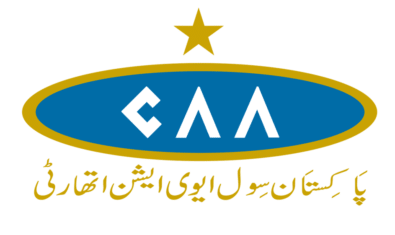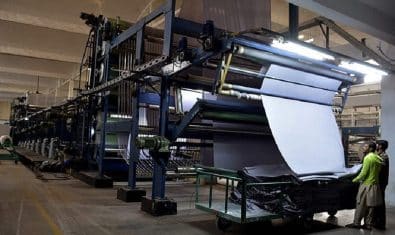Pakistan Telecommunication Company Limited (PTCL) has deployed its first ever Fiber to Home service based on Gigabit Passive Optical Network (GPON) technology in Karachi.
PTCL first hinted the deployment of GPON and very high speed broadband back in 2009 and later on we learnt that KHL was going to deploy the network for the company.
With first deployment in Karachi, PTCL’s Fiber to Home service is also available in Lahore and Islamabad as well, reported a news agency citing a company statement.
GPON provides a capacity boost in both the total bandwidth and bandwidth efficiency through the use of larger, variable-length packets. It not only provides substantially higher efficiency as a transport network, but also delivers simplicity and superb scalability for future expansion in supporting additional services with lowest cost for all modes of operation.
With this unique capability PTCL has raised the bar of customer experience by many notches. Initially the service includes unprecedented voice quality on telephone, extremely fast and reliable broadband connectivity and digital television with amazing video quality.
PTCL’s SEVP, Business Zone South, Abdullah Yousef Abdullah said on this occasion,
PTCL will widely deploy Fiber to the home technology of which the first step has already been taken in some parts of Karachi giving our valued customers the opportunity to experience the latest technology and the best quality of service.
Our aim is to delight our customers with such innovative products right at their doorstep which suits their life styles and spending budgets.
More details of PTCL’s GPON network are available here
Via Online

























As per my knowledge, nayatel is providing this technology since 2006 in islamabad and rawalpindi. So PTCL is not the first one in this technology.
Providing services on GPON is a good step but the customer services of PTCL is very poor. HIGH SPEED INTERNET WITH NO CUSTOMER SERVICES. Please comment, i am right or wrong…..
100% right
Bhai jaan,
It says that PTCL has deployed its first ever Fiber to Home service. Iss ka yeh matlab kahan nikalta hai k its the first one to do so?
My dear Ahmed: nayatel is also providing home services in rawalpindi and islamabad for the last 3 to 4 years. Kindly correct me if i am wrong.
sir ptcl provind ftth ont and nayatel cant
These news says “Pakistan Telecommunication Company Limited (PTCL) has deployed its first ever Fiber to Home service based on Gigabit Passive Optical Network (GPON) technology in Karachi.”
So, they are the first in Karachi. Nayatel is not present in Karachi yet.
U r very right brother Arsalan. I was talking about technology in Pakistan thats why i mentioned name of nayatel.
Wateen Tel is offering GPON based FTTH since 2009 in Lahore, Multan & since 2010 in Isb & Karachi
no wateen not providing in ftth wateen is only providing with server connectivity and ptcl providing home based ont you got it
nayatel provide in 2006 but ptcl workout in 2002
It will be expensive. Thats my guess.
with copper package (phone+4MB NET+IPTV)including tax 3100
with gpon (phone landline all pakistan free,mobile half rate+4MB NET+iptv)including tax 3200/=
FTTH has largely failed to capture the large number of customs as has wireless broadband which continues to outpace FTTH growth. One can see the growth clearly with the huge numbers from PTCL EVO, Witribe Wimax, Auguere Wimax and Wateen (total about 750,000) compared to that Pakistans only FTTH provider Nayatel (total about 10,000). Given PTCL DSL is also there but they started earlier and the quality of fixed line is so poor, maintenance costs so high that a large scale roll out is just not justifiable given the ease of provisioning and mobility benefits of wireless broadband.
The only consideration of limited bandwidth available on wireless broadband compared to FTTH but this is no more an issue with LTE.
TV is a good value add on fiber solution like GPON but how can you compete with the desi cable wala at 150 rupees for 100 channels. These MSOs are also upgrading to digital over coax and will provide more channels and HD at no more than 300 rupees.
ptcl gpon service is best ever but you dont know
1. Nayatel has been providing B-PON based services since 2006 and G-PON services since late 2009 (Different technical standards). In addition, Cybernet and Wateen also have operational GPON networks in Karachi and Multan respectively. I also know someone working for NTC who claims that they have also had an operational PON network in Islamabad for the last couple of years (this needs to be confirmed, though.
2. A fiber based network only provides more bandwidth over the last mile. It does not resolve customer service or backend congestion issues.
Ok I didn’t know about Cybernet or Wateen although it gives credence to the fact that fixed line is dead (or atleast well on its way there)
Can you tell me how many customers do all FTTH providers have in total (less than 15000 is my guess). Nayatel started in 2006 and in 2011 it still has no more than 10,000 is my guess.
Augere started in 2009 and has 70,000 customers, Witribe started in 2009 and has over 120,000 customers, PTCL has over 110,000 customers just on EVO service. I accept that these are small bandwidth connections but with large swaths of spectrum being opened worldwide and the flexibility of MBB, wireless will become the primary medium for broadband.
I’m sorry but I really don’t see a future for fixed line broadband of any sort since wireless technologies such IMT-Advanced provide same benefits as fixed line fiber and many additional one such as ease of provisioning, mobility etc. You can see it in the numbers also.
Yes you are right that the number of customers of FTTH is very low as compared to Wireless. But how many corporate customers do you see connected over Wimax or EVO where they have option of FTTH or even xDSL?
The average RPU of these customers using FTTH is much much higher than wireless (probably with a ratio of 1/10). So in theory you can have a revenue stream equivalent of 150K wireless subscribers while having 15k FTTH customers. So in my opinion there is business case.
Agree with Jahanzeb. The revenue model is totally different from that of a wireless based internet provider. If you deploy a fiber based network (FTTH or otherwise) just for the Rs1200/month type customers then you are doomed. Pl see my earlier comments at
https://propakistani.pk/2011/01/25/etisalat-was-in-buyout-talks-with-nayatel-micronet/
By the way, I just came back from a seminar at Islamabad Hotel where almost all the speakers/sponsors were from the Wireless domain talking about 3G and 4G and what not.
Interestingly, Dr. Yasin, the PTA Chairman, in his concluding remarks said that the future was in Fiber to the Home and not in last mile wireless. :-)
Nobody is doubting that FTTH can provide significant bandwidth today but with the growth of wireless, increase of spectral efficiency and large amounts of IMT-Advanced and LTE ecosystem maturing and ability to support 100+ mbps -and even 1Gbps, the bandwidth benefits of FTTH will be outweighed by wireless.
I see the point made by Afzal and Jehanzeb about FTTH better suited for enterprise market today but 3 points to consider:
A. I am not comparing EVO and Wimax to FTTH but high bandwidth LTE at 100+mbps will gain the market penetration faster than FTTH/PON networks. Deploying FTTH is much more expensive and time consuming to build and maintain. By the time it is done LTE wireless will have already consumed the market.
B. Can one really build a FTTH network exclusively for the corporate market? I dont think this has been successfully done anywhere I know of. The Rs 1200 customers in high volume is the cash cow that fuels rollout. One can build a metroethernet network for some limited application such as high bw video transfer, disaster recover replication etc. but really why not just lay dark fiber cores or metroethernet. PTA Vision 2020 also read that the future is Carrier Ethernet and not GPON for this same purpose.
C. Etisalat has targeted 100% home in UAE for FTTH. But that is a completely different market with ARPU of 100 USD per household (7 x that of Pakistan) and in a time when high bandwidth wireless 4G LTE was not available. Would they still deploy FTTH in the presence of LTE I doubt.
I think people cannot imagine the little time it will take to deploy 100+mbps LTE. The equipment is available today!
bro u forgot one thing that wireless connection has a high ping problem for online gamers.it is nearly imposible for you to do online lag free gaming on wireless connection wheather it be wimax 3g or whatever in Pakistan.
Agreed Mr. Afzal. So customer services issues will not solve if they deply BPON, GPON, TPON or DPON :)
ptcl providing bandwidth for all companies
Surely a great service being launched by PTCL, but some should inform them to rather do some thing regarding their network before providing such sort of services as they have got a really poor network setup of internet….
Is this service in all Karachi exchanges or limited to some area?
Mehwish Khan, Iss ka keya faida hoga ? Iss Sey 1 MB ki Speed matlab 1,024 KBPS ana Shuru Kr Dy Gi?
well they cover all the khi exchanges or few one and what about starting cost ?
I know this may not be right place for this but I wan’t to share an article about dengue fever that is plaguing the lives of people of Pakistan. Everyone should read this complete guide to know about this fatal disease. The link to article is:
http://www.babatips.com/health-tips/dengue-fever-symptoms-treatment-and-prevention/
Repost and share to save lives.
lolz ammar yes u are right its not the right place…
Salam, keep up. What about 50mb with 2 coper line ¿
Can any body tell me that PTCL can provide 50 mb on copper.
8 Mbps b possible ni app 50 Mbps ki baat kar rahey ho
FTTH GPON WIMAX LTE ANYTHING PEOPLE I JUST WANT STABLE INTERNET CONNECTION WITH HIGH BANDWIDTH.
Wateen is offering GPON in Karachi, Isb, Lahore & Multan since 2009. Many more cities to come in near future
A fiber once deployed saves you the headache of CAPEX for the next 10-15 years and OPEX is low too. But for Wireless the life span of the technology is too short and you find every now and than new wireless technology replacing the other while the previous one is not yet matured or intermediated. Tell me how many users in Pakistan have literally used the 3G technology to in its true sense linked to the 3G or 4G mobiles/tablets they own hardly 5-6% of the total GPRS market.
Fixed line fiber media is the Ferrari of all the media the more fuel you add the more it runs and with optimum performance.
One thing is as what i hope for is that, the service for these connections isn’t that bad and worse as experienced by me when i use a EVO 3.1Mbps wifi cloud of PTCL….
The big issue inside PTCL right now which is to some small extent a problem at Mobilink also is that which division manages what. As the focus of mobile moves from voice and narrow-band data to voice and broadband data, the lines between voice and data divisions is getting blurry.
PTCL problem is that it has Ufone as a separate division from the rest of the business. This was all right for the past when the distinctions were clear between mobile voice and data networks, which were mostly fixed line at the time. In fact Ufone was run as an independent division with arguably newer management and this helped it compete well with Mobilink (although still no match for Telenor).
However with the coming of 3G and maybe 4G even, the confusion in PTCL is that Ufone division should do 3G and 4G which is wireless and leave the rest of the company to do fixed line. Therefore projects like broadband DSL and FTTH are being taken by the non-Ufone division to keep them happy and occupied. But the growth I think will mostly come from cheap connections with no hassle to install and reliable. Right now for me this is wireless. I started with Maxcom DSL then after so many problems because of this and that I just moved to Witribe wimax.
I don’t know what the future of FTTH will be (although from the comments in the section there are good arguments for both sides) but I do know that in Global telcos data is data whether it is mobile data or fixed. It, and Ufone, should move from being a subdivision of PTCL to central to PTCL. One can leave Etisalat to decide who should manage the show but in my opinion the direct management of either mobile or fixed should NOW be run by ONE management. Getting this strategy and management aligned clear is the only hope for PTCL if it wants to benefit from the growth in data customers. The VAST majority of data customers are going to come from wireless. Just like if there was no telephone lines or mobile lines.
Also wanted to throw one observation regarding comments on this section. People are really praising this 4G LTE revolution. I don’t know how different it will be from Wimax but seems mobile companies around the world are in one huge rush to deploy. I was reading ATT and Verizon are launching in America in the next 2 weeks and will give speeds of 25 megabytes to start and upto 300 megabytes. If this is true I am seeing very strong future for 4G LTE and definitely in Pakistan. Here any infrastructure is constantly going to be damaged because of the rains vanadalism busted pipes yada yada will have its 15 years life very much curtailed. I also dont know how much optical fiber or this G-PON thing PTCL has put into which areas but I agree it is going to be slow and will need to be maintained. Can also someone help me understand if PTCL is going to have to install this G-PON network from scratch or can it use the fiber it already has. I am sure it has a lot. I think one of PTCLs reason s for success in DSL was maybe because it already had the copper line to our houses installed over many many years and just used this (and if it has to pull a optical cable to everyones houses and offices won’t this just be too expensive to pull and take time and then to maintain?) Can somebody confirm? If this is really the case then it the same as if there was no telephone lines or mobile lines and one should choose which type of technology to install. Answer if true is of course mobile.
Currently, PTCL has a lot of fiber within the cities but this only goes up to their cabinets and in some cases to their large corporate customers. For GPON or FTTH there is one fiber going to every customer’s premises. So, for example, if PTCL wants to provide GPON in DHA, it will have to pull a fiber into every house and in case of apartment buildings, to every apartment. This, obviously, is expensive. Right of way issues are also significant in cities and can consume a lot of time and money.
Consequently, a business model focusing only on providing GPON/FTTH to the 1200/month type market will not succeed.
I don’t have seen PTCL staff lying fiber cables in the streets of my area (North Karachi. I don’t think so PTCL has covered 100% areas of Karachi.
saqib dear ptcl lying fiber with in 2001 because i a have done gis servey of ptcl fiber cable.
Main ptcl par net chalata hoon aur mere 1MB student package ha. Pehle is k charges 879 rupee the magar is mahene is k charges 929 kar dae hain. Magar ptcl k taraf se na bataya gia nae information dar gae k is mahene hamne charges bara dae hain
please go to your nearest one stop shop because ptcl cant increase any bill revenue
This indeed great news for broadband in Pakistan, one thing we all can agree on is that the no BW is high enough. It’s only a start, With three cities. FTTh is the only option we have till we move to 4G ( with cheap end devices ), wimax has failed and barely manages to compete with standard copper dsl ( nothing above 2 mb is realistic). So there’s no comparison of ftth with wimfax here. The only real obstacle is the ONT price. If we have something around 8 to 10 K it becomes more feasible for standard hsi.
Regarding who’s first in this area, I agree ptcl didn’t claim anything other than their own first, But without doubt Nayatel is the leader here, followed by cybernet. Wateen hasnt announced anything commercially but they are operating at a small scale, but they do have huge potential to grow in this area ( about time they evaluate their wimax strategy ). And regarding the service level, of course the customer service and osp teams would be a must for quality of service, but the passive nature of osp reduces maintenance to very low, thus depending less on human resources.
It’s great effort by PTCL to keep their customers from leaving!
Option A
One Time Charges: Rs.15000
Packages:
1. 4Mbps @ Rs.2999
2. 6Mbps @ Rs.5999
3. 8Mbps @ Rs.7999
4. 10Mbps @ Rs.10999
5. 20Mbps @ Rs.13499
6. 50Mbps @ Rs.15999
7. 100Mbps @ Rs.25999
Option B
One Time Charges: 0
Packages:
1. 4Mbps @ Rs.3499
2. 6Mbps @ Rs.6499
3. 8Mbps @ Rs.8499
4. 10Mbps @ Rs.11499
5. 20Mbps @ Rs.13999
6. 50Mbps @ Rs.16499
7. 100Mbps @ Rs.26499
** F.A.Q **
========
*One Time Charges. For the Box, technically called ONT (optical network Terminal)
**SDTV is actually getting named as SDHD-TV in PTCL. As there are few channels available in HD which will be provided to user in HD … rest SD. Though the plan of Full HD is still on way… (commercial aspects left)
1. The data rates of GPON are not symmetric! Most Probably 1/4 Upload Bandwidth.
2. It will be commercialized around December this year.
3. Provider Locations are currently limited which you can confirm from your local exchanges when it comes.
4. Intl Gateway Ping Response is around 3-20ms from user premises. (Karachi SEA_MEA_WE_3&4)
5. The Data rates defined above includes header. Which means usefull bandwidth after header tear off would be around 85%.
6. Target markets are small business companies to large coorporates. Home users with extreme demands or having poor line conditions. Also for SD/HD-TV.
7. It is not ultra broadband because GPON is more appropiate terminology technically.
8. For people considering expense…PTCL managment answers it as Quality comes with price. Its not a free investment It will reduce by time.
9. The # of Free Calls and DSL Data Usage are Unlimited.
10. No other company would get benefit as they are already on a dark fibre media (no delays) The delays are of their own network. Also that Nayatel traffic is on TW … PTCL as redundant. Wateen on their own network.
11. For people interested in the CPE (ONT) Given to customer will be: Ericsson’s T083G GPON ONT
Stay Tunned.
I will Answer all quries on this main post so that duplicate questions are not asked!
dont see these type of fake billing cretaria because i am gpon installer and billing is minimum and different.
I agreed that PTCL customer Service is not good but i belong to MMBB Technical Team and the services the speed and the market price is also compare with other operate PTCL is offering high speed in low cost…
yeah service karachi may start hogayi hai ?
yes dear and i am gpon installer please tell me where you live
Well…
Home Users with many compromises -> Wireless is good ; but FTTU/FTTH is better, of course.
Corporates which cannot afford compromises -> Obviously FTTU/FTTH.
So it depends upon the need.
Yap Ajaz u ryt ppl dun kw anythng abt this Technolgy Gpon nits a gr8 benift from PTCL to the ebd users jus pay min amount n get max benifit….
Would anybody do me a favour… I just got installed GPON in my office but facing a problem that the internet configured port is working perfectly fine when connected to a laptop of desktop but it remain idle (no connectivity) when connected to network hub or switch. Therefore, i am unable to use internet at more than one computers through LAN cable networking.
PTCL is fail does not matter what PTCL is going to louche because PTCL do not know how to provide after sale services that Nayatel knows and secondly PTCL is a semi GOVT Department that means NO WORK ONLY SALARY
other companies providing with only in server then servers providing with copper ethernet wire but ptcl providing gpon ftth fiber to the home i am ptcl gpon ont installer in karachi army and many foriegn embessies have installed 100 mbps connection
yes i am gpon technician and i love gpon network i like my ont very much
huawei ont is optical to electrical interface,phone line provider,wifi router, iptv connectivity provider all in 1